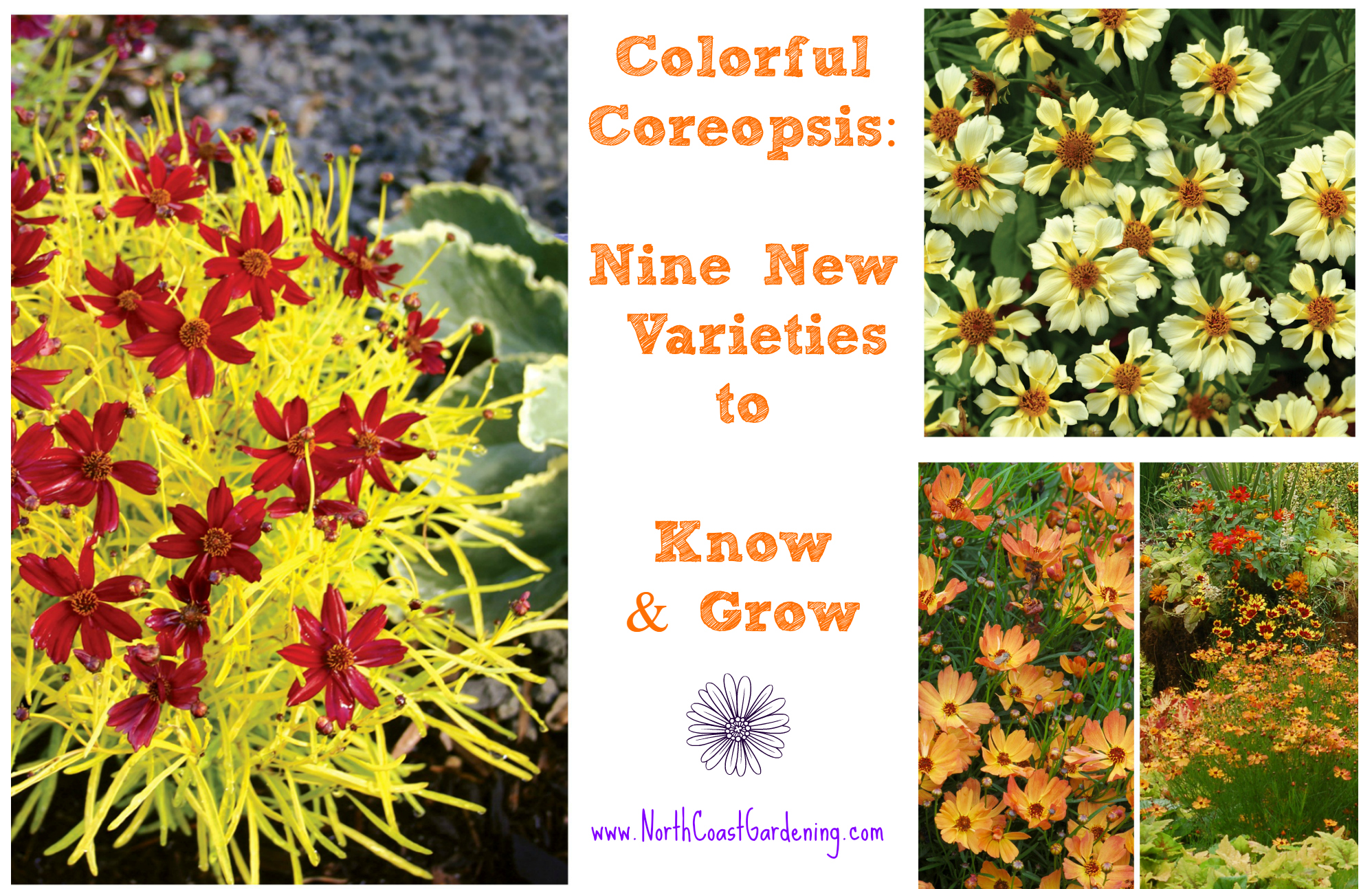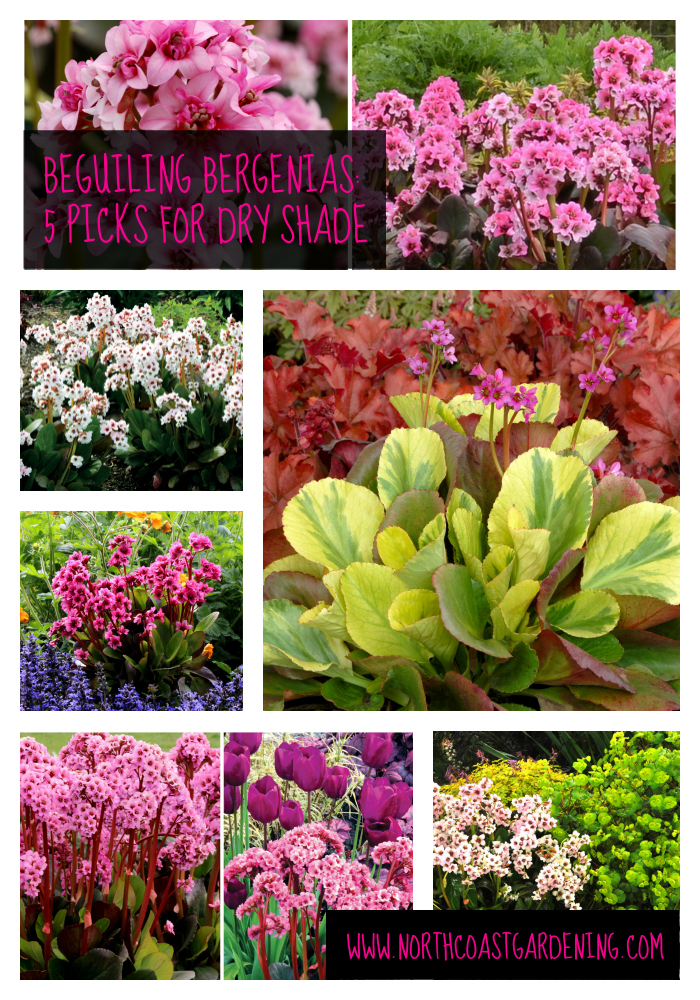-
The Many Faces of Coreopsis: New Varieties to Love

Coreopsis is a staple of the traditional flower garden because it’s long-blooming, easy to grow, and the profuse little daisy-like flowers can cheer up anyone if they’re having a bad day. Yet most people haven’t looked beyond the old-school varieties to learn about the wide array of colors available in this favorite, adaptable plant. These…
-
Beguiling Bergenias: 5 Varieties for Dry Shade

While many gardeners find shade challenging enough, add in dry soil and deer, and the list of plants which will perform gets shorter and shorter. Yet Bergenia, an unassuming perennial with leathery evergreen leaves, does admirably under all of these conditions. Though you may have grown Bergenia in the past and been unimpressed by its tendency…
-
Humboldt’s Gothic Princess: Giant Purple Wakerobin
Who says native plants aren’t lovely? Giant purple wakerobin, or Trillium kurabayashii, is just one of the uncommon beauties found in our local forests. I love the mottled leaves, which rival those of Brunnera ‘Jack Frost’ for interest in the shade garden, but the blackish-burgundy blooms seal the deal for me and make this a…
-
The Envelope Please! The Winner is-
Guest post from Stephanie Cohen, plant maven and co-author of the deliciously readable The Nonstop Garden: Every year new perennials tempt us to buy them. Some become instant successes, others never achieve notoriety, and some really bad plants hang around forever. It gets more and more difficult to pick the winners and losers. I am…
-
Top Landscape Plants (Excerpts from Experts)
When the Garden Designers Roundtable chose Top Landscape Plants as this month’s topic, I thought to myself, “Hey, no problem, I can write that in my sleep.” I mean, enthusing about plants is kind of my thing, you know? But given that this is book excerpt week here at North Coast Gardening, I thought it’d…
-
Color Echoes: Variegated Dwarf Weigela and Clifford Moor Red Catchfly
These two plants are easy to grow and take little care to look their best. Variegated Dwarf Weigela, Weigela florida ‘Variegata Nana’, is a sturdy shrub to about 4′ tall and wide. It loses its leaves in winter, but comes back with fresh growth and masses of flowers each spring. Clifford Moor Red Catchfly, Silene…
-
Plants to Love: Gaultheria mucronata or Prickly Heath
Like the barely-fragrant Stinking Hellebore, Gaultheria (formerly Pernettya) mucronata has been given a somewhat undeserved and unfortunate common name, probably by some delicate-skinned maiden who’d never heard of gardening gloves.
-
Plants to Love: Spanish Shawl (Heterocentron elegans)
This sweet little groundcover looks simple and refined when not in bloom, like a larger-leaved, deeper-green version of Baby’s Tears. But once it comes into bloom, it is a serious showstopper, with red hairy bracts holding disproportionately large fuchsia blooms. It flowers during the entire growing season, spring to fall, and the cheery red bracts…
-
Plants to Love: Rainbow Drooping Leucothoe (Leucothoe fontanesiana ‘Rainbow’)
I know you’re wondering, so let’s get this out of the way: it’s loo-kow-thow-ee. You only have to say the name once though, when you’re looking for it at the nursery, and then you can call it anything you like. “That gorgeous variegated thing” is what most people call it. Andrew of Garden Smackdown suggests…
-
Plants to Love: Dwarf Fleeceflower (Persicaria affinis ‘Dimity’)
This low-maintenance perennial forms a slowly spreading mat of thick green foliage, and at the end of summer bursts into bloom with a multi-colored show. The buds start out pale pink and fade to deep rose, eventually turning a rich rusty brown for fall. The foliage too gives a fall show, getting a bronzey-red tone…
-
Plants to Love: Snowmound Spirea (Spirea x nipponica ‘Snowmound’)
‘Snowmound’ Spirea (USDA Zones 4-9) is a lovely thing, with deep green leaves, reddish stems, a graceful arching habit and rounded form. It loses its leaves, but doesn’t make a mess about it, and the white flowers in spring make you forget that you missed it all winter. ‘ Snowmound’ needs full sun to do…